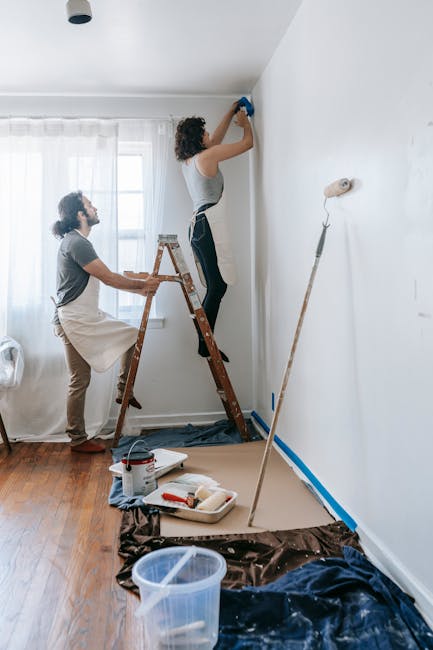– Getting Started & Next Steps
 Renovating a Victorian Home: A Comprehensive Guide for You
Renovating a Victorian Home: A Comprehensive Guide for You
Introduction:
Are you the proud owner of a Victorian home? Victorian architecture is known for its intricate details and timeless charm. However, remodeling such a historical home can be a daunting task. From preserving its unique features to modernizing its functionality, there are several factors to consider. In this informative guide, we will explore the essential steps involved in remodeling a Victorian home.
1. Research and Planning:
Before diving into your remodeling project, it is crucial to conduct thorough research about Victorian architecture. Familiarize yourself with the key features, such as ornate trim work, decorative moldings, and distinctive window styles. This knowledge will enable you to make informed decisions about preserving or replicating these elements during the renovation.
Next, create a detailed plan that encompasses your remodeling goals. Assess the condition of your home, identify areas that require immediate attention, and prioritize your projects accordingly. Remember, planning is the foundation for a successful renovation.
2. Preserving and Restoring:
Preserving the original charm of your Victorian home is of utmost importance. Look out for unique architectural details, such as hand-carved banisters or stained glass windows, and ensure they are restored to their former glory. Expert craftsmen can assist you in matching period-appropriate materials and techniques.
Additionally, consider preserving the original color palette. Victorian homes often featured vibrant hues, such as deep reds, rich greens, and striking blues. By retaining these authentic colors, you can enhance the historical authenticity of your home.
3. Upgrading Systems:
While it is important to preserve the historical elements, modernizing your home’s systems is essential for comfort and functionality. Update the electrical, plumbing, and HVAC systems to meet current safety standards. This will not only enhance your daily living but also increase the value of your property.
If your budget permits, consider incorporating energy-efficient upgrades. Installing LED lights, low-flow toilets, and energy-star appliances will not only save you money in the long run but also reduce your carbon footprint.
4. Flooring Options:
The flooring in a Victorian home plays a significant role in its overall aesthetic appeal. Hardwood floors were commonly used during the Victorian era, and refinishing them can restore their original beauty. However, if your existing floors are beyond repair, consider installing reclaimed hardwood to maintain the historic charm.
For areas such as kitchens and bathrooms, tile flooring was a popular choice. Opt for ceramic or porcelain tiles with intricate patterns and designs that mimic the Victorian era. These tiles can add an elegant touch to your home while still being durable and easy to maintain.
5. Kitchen and Bathroom Remodeling:
Update your kitchen and bathrooms with a touch of modern convenience while still maintaining the Victorian character. Explore cabinetry options that emulate the ornate details found in Victorian homes. Consider incorporating vintage-inspired fixtures and hardware, such as clawfoot tubs, pedestal sinks, and brass faucets.
In the kitchen, create a balance between functionality and historical aesthetics. Choose appliances that blend seamlessly with the overall design while still offering the conveniences of modern technology. Custom cabinetry with raised panels and decorative moldings can add a touch of Victorian elegance to the heart of your home.
6. Outdoor Spaces:
Victorian homes often feature expansive outdoor spaces, such as wraparound porches and balconies. Restore these areas to their former glory by repairing any damage, replacing deteriorating woodwork, and repainting or re-staining surfaces. Enhance the curb appeal of your home by adding period-appropriate landscaping and exterior lighting options.
Conclusion:
Renovating a Victorian home is a project that requires careful planning and attention to detail. By preserving its unique features, modernizing its systems, and incorporating period-appropriate elements, you can create a beautiful and functional space that honors the historical charm of your home. Remember, each step of the remodeling process is an opportunity to enhance the beauty and value of your beloved Victorian home.
Incredible Lessons I’ve Learned About
This post topic: Employment